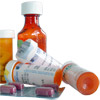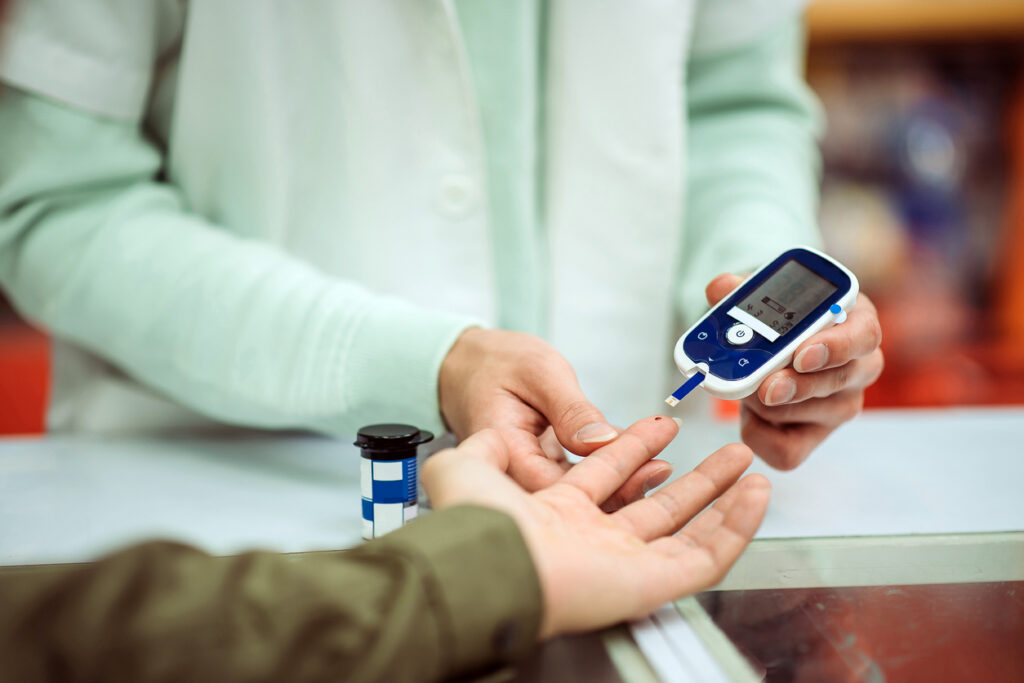Introduction

HIV infection cannot be cured. However, the infection can be controlled using a class of drugs known as antiretrovirals (ARVs). ARVs are the best available treatment for HIV and it has been proven that complying with antiretroviral therapy (ART) reduces the rate of AIDS-defining conditions and the rate of death due to HIV/AIDS.
There is a wide range of ARV drugs available. ART regimens vary from person to person, depending on resistance of that particular HIV strain to different drugs, how well it can be tolerated, how it interacts with other medications or illnesses the person may have, cost, and individual preference. There are four main classes of ARV drugs, namely:
- Nucleoside and nucleotide reverse transcriptase inhibitors (NRTIs) such as zidovudine, didanosine, zalcitabine, stavudine, lamivudine, abacavir, emtricitabine and tenofovir;
- Non-nucleoside reverse transcriptase inhibitors (NNRTIs) such as nevirapine, delavirdine, efavirenz and etravirine;
- Protease inhibitors (PI) such as saquinavir mesylate, fortovase, ritonavir, indinavir, nelfinavir, amprenavir, fosamprenavir, atazanavir, tipranavir and darunavir; and
- Drugs that interfere with viral entry into host cells such as fusion inhibitors (enfuvirtide) and CCR5 antagonists (aplaviroc, vicriviroc and maraviroc).
Book your health appointments online
Find and instantly book your next health appointment with Healthengine
The World Health Organization (WHO) recommends all people with HIV who are eligible for treatment receive a combination of two types of ARV drugs. As a first-line therapy, this is generally two NRTIs and a NNRTI. Second-line ART therapy generally consists of a ritonavir-boosted protease inhibitor, plus two NRTIs. However, consulting with a specialist to determine the most appropriate combination of ARVs is essential.
If a HIV infection is susceptible to the prescribed ARV regimen and the drugs are taken as directed, the replication of the HIV virus is reliably suppressed in 80% of cases who have not received ARV treatment before. If an individual does not take the medications as directed (taking them occasionally or intermittently), then this benefit cannot be guaranteed and a treatment-resistant HIV strain is more likely to emerge. This can make future treatment of the infection much more difficult.
How does it work?
Once the HIV virus enters the bloodstream it can commence its reproductive cycle, known as viral replication. HIV binds to certain receptors on the surface of a CD4+ T cell. Using these receptors it can introduce itself into the immune cell, where it moves into the cell nucleus and inserts itself into the human DNA strand through the use of specific viral enzymes such as viral reverse transcriptase and viral integrase. Once it is incorporated into human DNA, the virus can then exploit the cell’s own machinery to manufacture more infective HIV particles, with the help of yet another HIV-derived enzyme called viral protease. These new particles are released into the bloodstream to invade more CD4+ T cells. As more and more cells are invaded, the HIV replication cycle increases exponentially, eventually expending all normal CD4+ T cells and leaving the individual without a normal immune defence system.
All ARV drugs target a particular step in this HIV replication cycle. NRTIs were the first drug classes licensed for treating HIV. As their name implies, they target the HIV viral reverse transcriptase, slowing the integration of the HIV nucleic acid into the human DNA strand. Non-nucleoside reverse transcriptase inhibitors (NNRTIs) act in a similar fashion, albeit in a slightly different location on the same enzyme. By using NRTIs and NNRTIs together, researchers have discovered these two classes of drugs have a synergistic effect (where the combined effect of the drugs is greater than the sum of the effects of the drugs when they are used alone) on reducing HIV replication.
 |
For more information on the other classes of anti-retroviral therapies, see Antiretroviral Therapy (Anti-HIV Drugs). |
How well does it work?

WHO guidelines recommend that HIV-positive individuals who have not taken ARV drugs before should receive two NRTIs (preferably zidovudine or tenofovir, plus lamivudine) and either efavirenz or nevirapine as a first-line therapy. The WHO also recommends that HIV-infected pregnant women receive zidovudine plus lamivudine (NRTIs) with either nevirapine or efavirenz as a first-line therapy. However, efavirenz should not be initiated in the first trimester because it has been shown to carry a risk of malformation to a developing foetus.
When studying how effective an ARV drug is, investigators often measure the CD4+ T cell count in people before, during and after treatment. Because infection with HIV generally destroys CD4+ T cells, an effective treatment will result in the treated individual’s CD4+ T cell count increasing. Another way of assessing the effectiveness of an ARV drug is to measure how many viral particles can be detected in a blood sample taken from an individual. Because an effective ART will prevent the virus from replicating, the amount of virus detected in an individual after receiving treatment should decrease.
Two major clinical trials of efavirenz have demonstrated that it is an effective treatment for HIV infection when added to other NRTIs. One trial of 1,266 patients compared three different combinations of ARV drugs and found that when patients received efavirenz as part of their treatment, HIV levels at approximately 1 and 3 years were significantly lower than for those who did not. Another trial was conducted in 196 patients who had previously received other ARV drugs – the researchers found that efavirenz use was associated with an increase in the levels of CD4+ T cells, as well as better suppression of the HIV infection after 48 weeks of treatment.
Two trials of nevirapine established its effectiveness. 2,249 patients in a randomised trial comparing nevirapine, lamivudine and background therapy consisting of other standard ARV drugs, to lamivudine alone plus background therapy. The addition of nevirapine to background therapy (with lamivudine) was associated with significantly greater improvements in CD4+ cell counts after 1 year of therapy. After 2 years, patients who used nevirapine had lower rates of progressing to AIDS or death. In a smaller trial of nevirapine with zidovudine and didanosine, the addition of nevirapine made HIV suppression more effective (after 48 weeks). Yet another trial examined nevirapine use in children. 47% of children with HIV (3 months to 16 years of age) who received 48 weeks of nevirapine therapy had a HIV level of less than 400 copies/mL.
Two large trials of etravirine are currently ongoing; however, the benefit of etravirine after 48 weeks has been seen in both of these trials. Of individuals receiving etravirine, 70.8% achieved a HIV level of < 400 copies/mL, compared to only 46.4% of patients receiving placebo. The average CD4+ cell count also increased following etravirine use over placebo.
Two similar trials of rilpivirine have established that after 48 weeks of treatment, the average CD4+ cell count increase from baseline (the cell count observed before beginning treatment) was greater for individuals with rilpivirine added to their treatment regimens, compared to those without.
Side effects
Use of ARV drugs is not without its side effects, and these can vary depending on the ARV used.
Efavirenz
The most significant side effects following efavirenz use are dizziness, nausea, headache, fatigue and rash. In trials, nearly 20% of individuals using efavirenz experienced moderate to severe nervous system symptoms, compared to 9% in the groups not using efavirenz. Similarly, 26% of treated adults experienced a new-onset rash after starting treatment, compared to 17% in control groups. The rate of rash reached 46% in children. Rarely, serious psychiatric side effects can occur, such as severe depression, paranoia and mania.
Nevirapine
The rate of side effects following nevirapine treatment are similar in adults and children. The most common are rash, fever, nausea, headache, fatigue, tiredness, vomiting, diarrhoea, abdominal pain and muscle pain. Rash is the most frequent; however, it is usually mild or moderate and occurs only 9% of the time. Nevirapine can rarely adversely effect the liver, so individuals starting on nevirapine should have their liver function checked 6 weeks after commencing therapy.
Etravirine
Etravirine use in clinical trials was most commonly associated with rash (10% of people treated), which was generally mild or moderate and more common in women. Other side effects include diarrhoea (7.0%), high triglyceride levels (6.3%) and nausea (5.2%).
Rilpivirine
The most common side effects after starting rilpivirine were depression (3.5%), rash (3%), insomnia (2.9%), headache (2.6%), nausea (1.2%) and dizziness (0.7%). Decreased levels of the stress hormone cortisol and increased serum creatinine (associated with decreased kidney function) and serum lipids have also been recorded.
Conclusion
Several trials of NNRTI use are still ongoing, particularly exploring the newer NRTIs (such as etravirine and rilpivirine) and the risks and benefits of different combinations of NRTIs and NNRTIs. It is important that the appropriate ARV regimen for HIV treatment is carefully selected, depending on medical history, other illnesses, prior HIV treatment, stage of the infection and individual preferences. People with HIV are strongly advised to work with a specialist HIV service to optimise their treatment.
References
- Centers for Disease Control and Prevention (CDC). The Global HIV/AIDS pandemic, 2006. MMWR Morb Mortal Wkly Rep. 2006;55(31):841-4. [Abstract | Full text]
- Lane HC. Pathogenesis of HIV infection: total CD4+ T-cell pool, immune activation, and inflammation. Top HIV Med. 2010; 18(1): 2-6. [Abstract]
- Schneider E, Whitmore S, Glynn MK, et al. Revised surveillance case definitions for HIV infection among adults, adolescents, and children aged < 18 months and for HIV infection and AIDS among children aged 18 months to < 13 Years. MMWR Recomm Rep. 2008;57(RR-10):1-12. [Abstract | Full text]
- Thompson MA, Aberg JA, Cahn P, et al. Antiretroviral treatment of adult HIV infection: 2010 recommendations of the International AIDS Society-USA panel. JAMA. 2010;304(3):321-33. [Abstract | Full text]
- Antiretroviral therapy for HIV infection in adults and adolescents [online]. Geneva: World Health Organization; 2010 [cited 12 August 2012]. Available from: [URL link]
- Antiretroviral drugs [online]. Melbourne, VIC: Therapeutic Guidelines; 2012 [cited 15 August 2012]. Available from: [URL link]
- Braunwald E, Fauci AS, Kasper DL, et al. Harrison’s Principles of Internal Medicine (15th edition). New York: McGraw-Hill Publishing; 2001. [Book]
- Staszewski S. Update on study 006 – EFV + AZT + 3TC versus the current ‘standard of care’ IDV + AZT + 3TC. Int J Clin Pract Suppl. 1999;103:10-5. [Abstract]
- Albrecht MA, Bosch RJ, Hammer SM, et al. Nelfinavir, efavirenz, or both after the failure of nucleoside treatment of HIV infection. N Engl J Med. 2001;345(6):398-407. [Abstract | Full text]
- Lange JM. Efficacy and durability of nevirapine in antiretroviral drug näive patients. J Acquir Immune Defic Syndr. 2003;34(Suppl 1):S40-52. [Abstract | Full text]
- Nevirapine [online]. Bethesda, MD: US National Library of Medicine – Daily Med; March 2012 [cited 29 September 2012]. Available from: [URL link]
- Etravirine [online]. Bethesda, MD: US National Library of Medicine – Daily Med; July 2010 [cited 28 September 2012]. Available from: [URL link]
- Rilpivirine [online]. Bethesda, MD: US National Library of Medicine – Daily Med; August 2012 [cited 29 September 2012]. Available from: [URL link]
- Efavirenz [online]. Bethesda, MD: US National Library of Medicine – Daily Med; August 2012 [cited 28 September 2012]. Available from: [URL link]
- Product Information: Stocrin (efavirenz). Granville, NSW: Merck, Sharp and Dohme (Australia) Pty Ltd; 31 May 2012.
- Product Information: Viramune (Nevirapine). North Ryde, NSW: Boehringer Ingelheim Pty Ltd. 19 December 2011.
- Product Information: Intelence (Etravirine). Macquarie Park, NSW: Janssen-Cilag Pty Ltd (Australia). 15 August 2011.
- Product Information: Edurant (Rilpivirine). North Ryde, NSW: Janssen-Cilag Pty Ltd (Australia). 21 December 2011.
All content and media on the HealthEngine Blog is created and published online for informational purposes only. It is not intended to be a substitute for professional medical advice and should not be relied on as health or personal advice. Always seek the guidance of your doctor or other qualified health professional with any questions you may have regarding your health or a medical condition. Never disregard the advice of a medical professional, or delay in seeking it because of something you have read on this Website. If you think you may have a medical emergency, call your doctor, go to the nearest hospital emergency department, or call the emergency services immediately.







